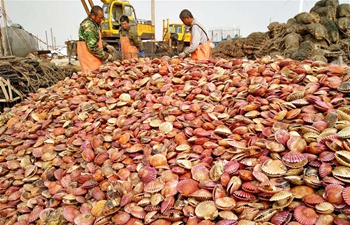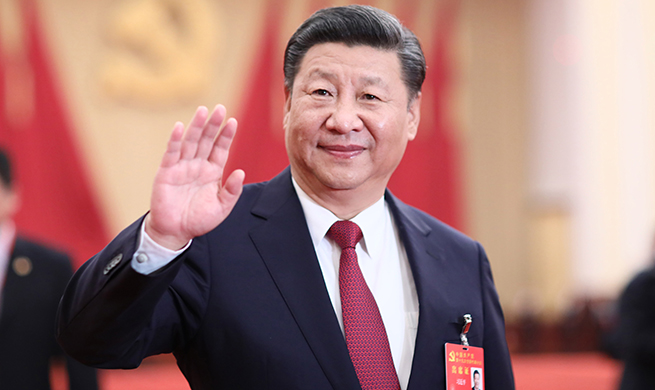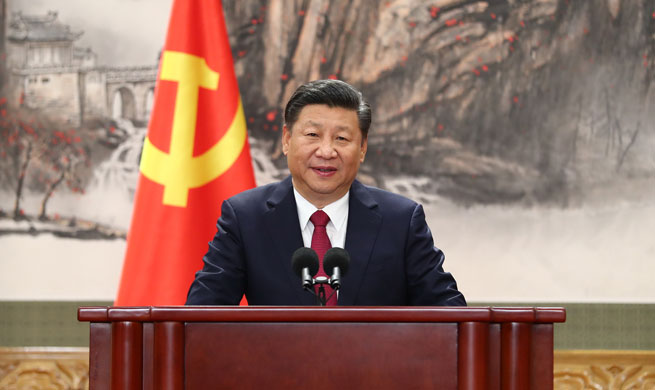LOS ANGELES, Oct. 28 (Xinhua) -- U.S. researchers has designed a protein-sugar vaccine candidate in an animal model, which has shown the ability to stimulate an immune response against sugars that form a protective shield around HIV. The molecule could one day become part of a successful HIV vaccine.
A group of researchers at the University of Maryland and Duke University designed the vaccine candidate using an HIV protein fragment linked to a sugar group. When injected into rabbits, the vaccine candidate stimulated antibody responses against the sugar shield in four different HIV strains, according to the new study, published this week in the journal Cell Chemical Biology.
"An obstacle to creating an effective HIV vaccine is the difficulty of getting the immune system to generate antibodies against the sugar shield of multiple HIV strains," Lai-Xi Wang, a professor of chemistry and biochemistry at the University of Maryland, said in a statement. "Our method addresses this problem by designing a vaccine component that mimics a protein-sugar part of this shield."
The protein fragment of the vaccine candidate comes from gp120, a protein that covers HIV like a protective envelope, which is covered by a sugar shield that bolsters HIV's defenses.
The team has previously tried to create an HIV vaccine targeting gp120, but had little success for two reasons. First, the sugar shield on HIV resembles sugars found in the human body and therefore does not stimulate a strong immune response. Second, there are more than 60 strains of HIV, with the virus being able to mutate frequently. As a result, antibodies against gp120 from one HIV strain will not protect against other strains or a mutant strain.
The researchers then focused on a small fragment of the protein that is common among HIV strains. They used a synthetic chemistry method to combine the gp120 fragment with a sugar molecule, also shared among HIV strains.
Next, the researchers injected the protein-sugar vaccine candidate into rabbits and found that the rabbits' immune systems produced antibodies that physically bound to gp120 found in four dominant strains of HIV. When they injected rabbits with a vaccine candidate that contained the protein fragment without the sugar group, they found that the antibodies bound to gp120 were from only one HIV strain.
"This result was significant because producing antibodies that directly target the defensive sugar shield is an important step in developing immunity against the target and therefore the first step in developing a truly effective vaccine," Wang said.
Next, the researchers will conduct longer-term studies in combination with other vaccine candidates to hone in on what areas of gp120 the antibodies are binding to and determine how they can increase the antibodies' effectiveness at neutralizing HIV, according to a press release.

















